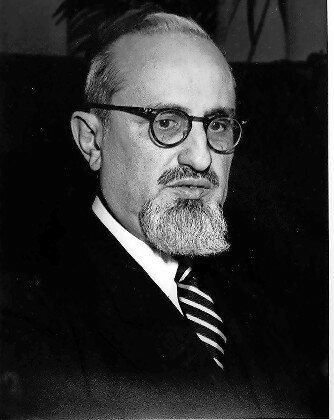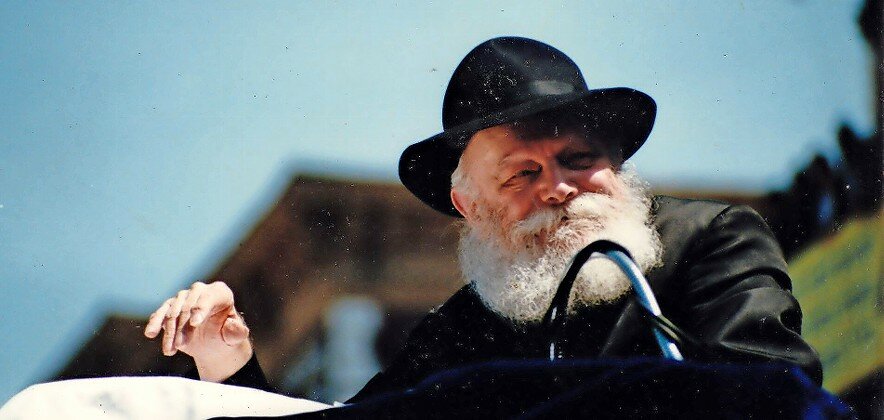How Chabad Lubavitch and Modern Orthodoxy approach leadership vacuums after 30 years
The Chabad-Lubavitch movement marked the passing — 30 years ago — of Rabbi Menachem Mendel Schneerson, the Lubavitcher Rebbe, in July. The movement continues to draw inspiration from the late Rebbe’s teachings, but for the first time in its nearly 250-year history, it has had no spiritual leader at its helm for a prolonged period.
The Rebbe died on June 12, 1994, at the age of 92, the year after Rabbi Joseph Soloveitchik, the visionary of the Modern Orthodox movement who is known as the Rav, died at 90 on April 9, 1993. The movements have adapted differently to their new realities without an unequivocal leader.
“Great people die sometimes,” Rabbi Menachem Genack, CEO of the Orthodox Union’s kosher division, told JNS. “They are not easily replaced.”
Many Modern Orthodox rabbis of great stature have followed in Soloveitchik’s footsteps, according to Rabbi Genack, spiritual leader since 1985 of Congregation Shomrei Emunah in Englewood. “But, of course, his voice is missing.”
The two leaders had very different approaches, which bred varying sorts of followings, according to Jonathan Sarna, university professor, professor of US Jewish history and director of the Schusterman Center for Israel Studies at Brandeis University in Massachusetts.
“Rabbi Soloveitchik did not have Chassidim,” Sarna said, referring to the followers of Chassidic rebbes, who have very close, often emotional, connections to their leaders. “That is part of the difference between his world and the Rebbe’s world.”
The Rav “was a great philosopher,” while the Rebbe was “an enormous personality, and he has these emissaries who carry forth his projects long after he is gone.”
No one now speaks for American Orthodoxy, according to Sarna. “I hope that someone will take that mantle, but it has not happened yet,” he said.
‘Lack of a Rebbe hurts’
If there isn’t to be another Rav or another Rebbe, what will it mean for these movements as they approach a time when rabbis can’t burnish their credentials by invoking their status based on proximity to the former luminary and a singular understanding of his teachings?
Since the Rebbe’s death, “it is very obvious that the organizational leadership has succeeded in tremendous accomplishments in the interim,” according to Lawrence Schiffman, professor of Hebrew and Judaic studies at New York University. But without a successor, the many lay members of the movement who don’t run Chabad centers are “people that are not sure what is going on,” Schiffman told JNS.
Most people who interact with Chabad do so with shluchim (emissaries) — rabbis, their wives and their children — who represent a small percentage of members of the movement.
He recalled attending Chabad programs growing up in which Chabad students would spend three times as long as others completing their prayers with special intensity. “That is all gone,” he said.
To Schiffman, “the old-fashioned Lubavitch Chassidim” aren’t as important as they once were, and the movement is more focused on outreach than inner spirituality. “The lack of a Rebbe ‘,” he said.
“You would think that a Chassidic movement needs new teachings and new inspiration from a leader,” Marc Shapiro, chair in Judaic studies at the University of Scranton, told JNS. “There was once every week a new Chassidic gathering with the Rebbe, someone to turn to.”
“Today, that is dead,” added Shapiro, author of the 2015 book “Changing the Immutable: How Orthodox Judaism Rewrites Its History.”
Young members of the movement “don’t know what it means to be at a gathering with the Rebbe,” he said.
‘How could they feel what I felt?’
Members of the Chabad movement want young people “to feel what they felt, but one cannot convey feelings,” according to one woman who serves as an educator and guidance counselor to many members of the Chabad community, and who spoke with JNS on the condition of anonymity.
“How could they feel what I felt?” she said.
“Saying that ‘the Rebbe would not be happy with this,’ that ‘the Rebbe would be happy with what you are doing,’ I think that is a mistake on our part,” the educator said. “What we end up doing is being very superficial, very ‘rah-rah’.”
She thinks that the movement ought to focus more on teachings, ideals and principles.
When photographing the Rebbe, documentary photographer Marc Asnin “experienced his love and energy,” Asnin told JNS. “Visiting Chabad Houses across the globe, it is evident that Chabad on many levels have replicated his energy and love.”
“It is a tribute to his inspiration — and his followers’ perseverance — that 30 years after his death, the movement has grown to the extent it has,” Asnin added.
In 2020, the Pew Research Center found that 17% of Jewish Americans reported participating either often (5%) or sometimes (12%) in Chabad activities or services.
‘Still alive’
“Righteous men, even in death, are called ‘alive’,” according to the Talmud. Sivan Rahav-Meir, an Israeli journalist with deep ties in Chabad, told JNS that the Rebbe is still seen as living in the community.
“They for sure miss the Rebbe, but they wake up in the morning in Thailand, Australia or in Israel, and they think how can they make the world a better place,” she said.
Several people with whom JNS spoke for this article declined to comment about succession within Chabad, with some telling JNS that they feared repercussions for discussing a taboo subject.
Joseph Waks, a former Chabad representative in Brussels, Belgium, is no longer part of the movement nor is he currently a ritually observant Jew. He doesn’t wear a yarmulke, “but I tell everyone that I am undercover Chabad,” he said.
Chabad is the face of Jewish life today, Waks said, and the movement isn’t just about ritual observance. Chabad has “become an empire and lighthouse for everything Judaism.”
‘Who is the heir apparent?’
Zev Eleff, president of Gratz College in the Philadelphia area, is an Orthodox rabbi who holds a doctorate in US Jewish history, as well as a former chief academic officer of Hebrew Theological College and vice provost of Touro College Illinois. He has published extensively on contemporary US Orthodox Jewry, among other topics.
Rabbi Eleff told JNS that in contrasting the leadership vacuums at Chabad and Modern Orthodoxy, “I don’t know if you have apples to apples. But you definitely are dealing with fruit.”
Many of the differences between the Rav and the Rebbe are institutional. Soloveitchik “very deliberately” avoided calling himself the head of Yeshiva University, and his role was on par with the university’s president, while Schneerson was “in charge of a discrete movement,” headquartered at 770 Eastern Parkway in the Crown Heights neighborhood of Brooklyn.
“Their leadership and the structure look very, very different — not unlike, say, the Presbyterian Church and the Catholic Church, which to some extent have very ratcheted-up leadership structures and other denominations do not,” Rabbi Eleff said.
Another difference came in the 1980s, when the Rebbe, after having a stroke, “was very deliberately not sequestered,” while “Rabbi Soloveitchik, by 1985, his family had removed him from the public scene, and pretty much no one was provided access to him,” according to Rabbi Eleff. “The Rebbe’s passing represented a very climactic end. Rabbi Soloveitchik had already been removed from his public influence eight years prior to his death.”
That’s why there was a discussion about succession not in 1993, after the Rav’s death, but in 1985. “There was a contest for the mantle of Rabbi Soloveitchik,” Rabbi Eleff said. The Rebbe, meanwhile, was the “uncontested leader of Chabad,” with an understanding that there would be no eighth Rebbe after his passing.
These differences occurred against the backdrop in the mid-1980s and early 1990s to the emergence of a “polarized Orthodoxy, whether because of what we would now call today LGBTQ, but at the time was the gay-rights movement,” Rabbi Eleff said. “You have the emergence of a stronger yeshivah-world community, in which the Rav was in some circles certainly persona non grata for his endorsement of general studies, Zionism.”
While Chabad “consolidated and closed ranks over leadership,” Modern Orthodoxy was at a “crossroads,” he added. Some of the rabbis at Yeshiva University took what the Rav taught and moved to the right, while others — largely Rabbis Yitz Greenberg, Avi Weiss and Saul Berman, Rabbi Eleff said — established a more progressive wing of the Modern Orthodox movement.
Someone to challenge Babe Ruth
If there is another Lubavitcher Rebbe in his lifetime, Rabbi Eleff would be shocked, he told JNS. Citing the way the late Conservative rabbi and scholar Arthur Hertzberg described the need for a religious movement to become a corporate structure, he thinks that might be a healthy thing for Chabad.
“Once Apple goes from a very, very well-known leader, Steve Jobs, to that corporate model, people thought, ‘Well, is Apple going to crumble after Jobs’s early demise?’ The answer is no,” Rabbi Eleff said. “In fact, they’re wealthier than ever before.”
Chabad has yet to find an issue for which it needs another Rebbe, according to Rabbi Eleff, who is working on a book about the concept of greatness in American culture. “Baseball doesn’t want somebody to challenge Babe Ruth,” and young people “think it’s stupid when people compare Lebron James or Kobe Bryant to Michael Jordan,” he said. “There is a value for the end of leadership.”
Chabad, which even at the lay level doesn’t crave a new Rebbe, “already has an equilibrium and a path forward,” he said, noting that the movement has major infrastructure, like a rabbinic playbook that draws on the Rebbe’s vision for newly ordained rabbis and for rebbetzins, as well as for emissaries who start new centers all over the world.
“Modern Orthodoxy was always contested, and there was a fracturing of all religious movements in the 1980s,” according to Rabbi Eleff. In 1983, there was a “splintering” of the Reform movement over patrilineal descent, and in 1984, in the Conservative movement over ordaining women. “Orthodoxy was already starting to splinter into your left, right and center, with Yeshiva [University] playing the role of the center,” he added.
Chabad and other Chassidic groups are “built differently,” he said.
“They’re built as a sect. They’re able to avoid what is typically happening in American religion and American Judaism writ large, which is this age of fracture,” Rabbi Eleff said.
These days, there is controversy surrounding the term “Modern Orthodox,” and Yeshiva University, which once identified as such, now calls itself broadly, “the world’s flagship Jewish university.” Rabbi Eleff sees this against the backdrop of broader societal change.
“I don’t get the sense that people are looking for centralized leadership. I get the sense that many people in the Orthodox community have reinterpreted their religious consciousness politically, whether that be with American politics or more likely Israel,” he said.
Rabbi Eleff, who became president of Gratz at age 35 in June 2021, thinks there may well be another undisputed leader of Modern Orthodoxy in his lifetime.
“It may be new individuals or new institutions, I’m not sure. It’s always very cyclical,” he said. “Do I know who that person is? No.”









